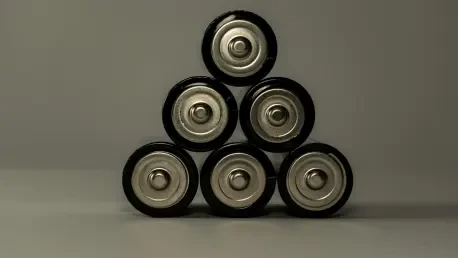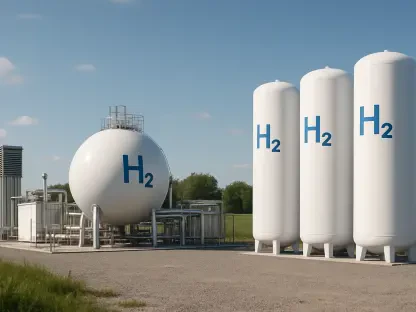As we face growing challenges with power outages and grid reliability, innovative solutions like battery storage systems are stepping in to protect vulnerable communities. Today, we’re speaking with Christopher Hailstone, a seasoned expert in energy management and renewable energy, who brings a wealth of knowledge on electricity delivery, grid reliability, and security. With his deep insights into how utilities can modernize and support at-risk populations, Christopher sheds light on the transformative role of battery programs in ensuring energy resilience during outages.
How are aging infrastructure and rising electricity demands challenging the U.S. power grid today?
The U.S. power grid is under immense pressure due to its age and the evolving demands placed on it. Much of the infrastructure, including transformers and substations, was built decades ago and wasn’t designed for today’s load or the frequency of extreme weather events we’re seeing. On top of that, electrification—think electric vehicles and heating systems—is driving up demand faster than many parts of the grid can handle. This mismatch often leads to more frequent outages and slower recovery times, especially in areas that haven’t seen recent upgrades.
What impact do extreme weather events have on the frequency and severity of power outages?
Extreme weather is a game-changer for grid reliability. Storms, heatwaves, and wildfires don’t just knock out power lines; they can cause cascading failures across entire regions. These events are becoming more intense and frequent due to climate change, and they often hit hardest in areas with older infrastructure. For instance, during a major storm, you might see widespread outages that last days or even weeks, particularly in rural or underserved communities where restoration takes longer.
How are utilities working to modernize the grid and build resilience against these challenges?
Utilities are investing heavily in grid modernization, and it’s a multi-pronged approach. They’re upgrading old equipment, integrating smart grid technologies for better monitoring, and rolling out distributed energy resources like home batteries and solar panels. Programs that encourage customers to shift or reduce usage during peak times also help ease the strain. The goal is to create a more flexible, responsive system that can handle sudden spikes in demand or isolate outages to smaller areas without widespread impact.
In what ways do home battery programs help reduce stress on the grid during peak demand periods?
Home battery programs are a fantastic tool for managing peak demand. They store energy during off-peak times or from rooftop solar during the day, then release it when the grid is under stress, like during hot summer evenings when everyone’s running air conditioners. This flattens out those demand spikes, reducing the need for utilities to fire up expensive, carbon-heavy backup plants. It’s a win-win—less strain on the grid and lower operational costs.
Can you explain how connecting multiple home batteries into a virtual power plant benefits grid reliability?
When you link home batteries together into a virtual power plant, you’re essentially creating a networked system that can act as a single, flexible resource. These batteries communicate in real time to balance supply and demand across the grid. If there’s a sudden outage or spike in need, the system can dispatch stored power from thousands of homes instantly. It’s like having a decentralized backup generator that boosts reliability without building new infrastructure, and it’s especially effective during localized disruptions.
Why are battery programs so crucial for medically vulnerable or underserved communities?
For medically vulnerable folks—think seniors or those relying on equipment like oxygen concentrators—outages aren’t just inconvenient; they can be life-threatening. Battery programs provide a safety net by ensuring backup power kicks in automatically. In underserved communities, where grid repairs often take longer, batteries bridge that gap, offering not just power but peace of mind. They also help build trust between utilities and these communities by showing a commitment to equity and resilience.
How do batteries ensure critical medical equipment keeps running during a power outage?
Batteries are a lifeline for medical equipment. When the grid goes down, a home battery—whether portable or permanent—activates within seconds to keep devices like ventilators or dialysis machines running. This seamless switchover prevents any interruption, which is critical because even a brief lapse can cause equipment to malfunction. During extended outages, especially in extreme heat or cold, this backup power can literally save lives by maintaining essential health support systems.
Why is a seamless transition from grid to battery power so important for medical devices?
A seamless transition is everything when it comes to medical devices. Many of these machines, like CPAPs for sleep apnea, can reset or shut off if there’s even a tiny delay in power delivery. That’s not just disruptive—it can be dangerous. Modern home batteries are designed to switch over almost instantly, so the device doesn’t even register the outage. This reliability gives users confidence that their health won’t be compromised, no matter the grid’s status.
How do batteries help vulnerable customers stay connected during outages, beyond just powering medical equipment?
Beyond medical devices, batteries keep communication lines open, which is just as vital. They can power smartphones, tablets, or internet routers, allowing people to reach caregivers, family, or emergency services during an outage. For someone who’s medically vulnerable, being able to get updates from their utility or call for help can make all the difference. It’s about maintaining a lifeline to the outside world when the grid fails.
What’s your forecast for the future of battery storage programs in enhancing grid resilience and supporting vulnerable populations?
I’m incredibly optimistic about the trajectory of battery storage programs. As technology advances, batteries will become cheaper, more efficient, and even easier to integrate with solar and smart home systems. I see virtual power plants expanding dramatically, creating a more decentralized and resilient grid. For vulnerable populations, I expect utilities to prioritize access to these programs, potentially through subsidies or partnerships, ensuring that no one is left behind. Over the next decade, I believe battery systems will be a cornerstone of how we prevent outages from becoming crises, especially for those who need power the most.









